Snooze on Solving: Leaving the Questions Unanswered
“Peace be with you implies a parallel benediction: vigilance be released from you.” Stephanie Duncan Smith, Even After Everything.
It was late April 2024. Finals week at the university where I worked was quickly approaching and my anxiety grew along with each day’s light. My husband and I had decided to move our family from San Diego, CA to Coeur d’Alene, Idaho. We had told our parents, our kids, and most of our friends. Nothing had changed—yet.
A text from our realtor informed me that the interior painting of our house needed to be pushed up two days sooner than planned. The painter had an upcoming surgery. The request was fair enough, yet my stomach dropped and my jaw locked. I was counting on those two last days of normalcy. Two more days until our house would never be ours again. Two more days until all evidence of our life here—painted accent walls and family picture galleries, the dents and scuffs and doodles of my children’s baby and toddlerhood—would be erased.
It’s too hard, I whispered. We should just stay.
We made the decision to move back in September, but I agonized about the choice for months.
“Have you made a pros and cons list?” A well-meaning friend asked when I told her about my ambivalence toward the move.
She couldn’t have known my every waking moment was devoted to weighing the merits of our decision. That it was impossible to accurately rank the value of raising kids near family against the desire to support my husband’s dreams.
You can’t say I didn’t try, though.
Every good moment in our San Diego life tallied a tick in my mental stay column.
My Dad texted a photo of his weekly lunch date with my daughter at McDonald’s. I shared my latest parenting challenge at my church’s mom’s group and was met with nods of empathy. I met a friend to “work” together at a coffee shop though our laptops never left our bags. My son’s first grade class sang “aye yay yay yay, canta y no llores” at their Open House.
Stay-stay-stay.
I tracked the bad moments, too. The stress of the end of the semester. My husband stuck in rush hour traffic, again. Teaching college writing in the age of ChatGPT.
Leave-leave-leave.
I became hyperaware of my every feeling and reaction to the move. One minute I felt relief at quitting my job—leave. The next I’d be racked with guilt for taking my kids away from their grandparents—stay.
A hundred times an hour. Dozens of times a minute: leave stay leave stay leave stay.
Waves of unease would hit while I was at a beach playdate with a friend of over 20 years (how can I leave this?) or when my kids played with their cousins (How could I possibly be responsible for tearing the family apart, permanently altering the key relationships of their childhood?).
Unease gave way to pure panic. I raged against our—my—choice. True, I had said we would move, but everything in my body screamed no! I was exhausted. I wasn’t sleeping. I could not accept this reality that I had somehow consented to months ago.
If I was going to survive the weekend of taking down frames and discarding baby items, of depersonalizing a house it had taken years to feel at home in, I needed more tools.
I’d felt this way before: most recently when I was stuck in the hospital with postpartum pre-eclampsia after my daughter was born. I could remember how my whole body tensed and sweat plastered me to the sheets when the nurse wrapped the cuff around my arm. I could sense my blood pressure rising with every concentric squeeze of the cuff, silent numbers stacked against me.
A decade before that, when burnout beckoned me to quit my grant writing job, I bucked and resisted. I could not stop the looping thoughts accusing me of failure, and I tried everything to make my reality not so (and then tried to drink myself into acceptance1.)
The first stage of grief is denial. I always imagined denial as a numbed out detachment from reality. In practice, denial is rooted in resistance. Denial ravages like rage.
When I looked back at those past scenarios, when I felt the panic about the move coursing through my body in this familiar way, I wondered what I could have done differently.
What do I wish I had known?
I wish I had surrendered sooner.
I have so much compassion for my past selves. When so much is out of control, it makes sense to want to control your resistance. At least I fought. At least I didn’t go down willingly, I had reasoned. I see now that I had only increased my own suffering and the suffering of those around me by not accepting the situation—that I needed hospital monitoring for my blood pressure, that I needed to quit my job.
What was different back then, before my OCD diagnosis, was that I didn’t know I had a choice. Resistance felt noble, responsible, inevitable. I had no language or tools of surrender and no framework to know that my mental mathematics of bargaining and back-and-forthing only deepened the grooves of my fear.
As I stopped and started a message reply to my realtor, the three dots wavering in and out of her view like my vacillating resolve, I wondered if surrender was possible.
How do you accept a reality that is unacceptable? That is uncomfortable and uncertain?
My fingers stopped typing mid-sentence and I smirked. Then chuckled despite myself.
Ha. I exhaled.
I had been training for this. Preparing for nearly two years for this very moment. The heart of OCD recovery is learning to tolerate discomfort and embrace uncertainty.
My own OCD treatment included a combination of Exposure and Response Prevention (ERP) and Acceptance and Commitment Therapy (ACT). ERP involves exposing yourself to a situation that evokes discomfort and uncertainty on purpose. ACT is a treatment plan where you commit to acting on your values in the face of fear and radically accepting reality.
The move felt different, though. Normal people obsessed about a decision this big. This wasn’t a weird rule OCD made up for me, but a real big decision with real life consequences for my family.
True, the decision itself wasn’t made in response to OCD, but what about my compulsive need to justify it, weigh and measure it, and tally and solve and reassure myself I was making the right choice? Textbook OCD for Aly.
And even if it wasn’t, what if I treated the move (well, my angst and indecision and agony over the decision) as OCD?
Had I been justifying my rumination by chocking it up to “wise and discerning decision making?”
How could ping-ponging back and forth all day every day be wise? Wasn’t I wasting the time I had left in San Diego?
My dear friend Krista had told me moving would be so much harder because I have OCD. In some ways, I knew this is true. Moving is stressful for everyone; it is especially hard for someone who finds it pure agony to not know if they are making the right choice.
But what if the converse was also true? What if my experience with OCD had better equipped me to deal with the intense emotions and unknowns of the situation?
I thought of all the tools I’d learned. All the practice I’d had with my past exposure work, trying mediumer, “wasting” time on purpose, making “irresponsible” choices. Those were small potatoes. Just practice. The move was game time.
Bring it on.
***
I planned out exposure work specific to the move. I wrote out worst case scenarios and accepted that maybe this was the worst decision and maybe I would regret it. I spent time each day with my tried-and-true tools of OCD recovery. Allow, accept, acknowledge the fears. Keep coming back to my values.
Despite the grief and the guilt and the utter inconvenience of it all, what did I want with the move?
I wanted to trust in an expansive goodness. That there was good for us outside of San Diego. I wanted to trust in adventure. Trust in our choices. Value my husband’s desire to branch out and try something new. I wanted to trust that we could handle however it turned out. Trust that discontent could be holy.
I committed to stopping the cycle of rumination.
I made an alarm/calendar entry to "figure it out later.”
Two years after the two days early painting crew, on April 27, 2026, I am allowed to decide if the move was a good idea.
But not a minute before.
I texted my realtor back, “Sounds good! 😀”
I still felt anxiety course hotly through my veins, but I didn’t fight it. I was able to plan and be present for so many special goodbye moments. My husband and I clinked bubbly drinks after I taught my last class, a dear friend planned a church-wide goodbye party and I read a sentimental poem, our pastor brought our family up on the stage and prayed for us, my colleagues treated me to dinner, my college friends spent an evening sharing perks and puddles, we took the kids on cousin outings, I led my last morning at mom’s group by sharing my favorite things, we held a closing ceremony in our home (I will write more about this later—I highly recommend!), we celebrated my husband’s 40th birthday with a taco truck and churros.
I couldn’t have even admitted I wanted these commemorative moments if I had stayed stuck solving the moving decision dilemma. I would have missed out on so much.
***
Releasing this need to solve and measure the merit of the decision in every moment was a life saver for the move. Pressing snooze on solving is a life-amplifier now.
When I’m not solving, I can be living.
I can just be.
Curiosity and freedom crop up.
If I was still measuring, then each interaction with another parent at school pick up would carry too much weight. A hello from a kindred spirit=we made the right choice. No one to talk to=pack it up, we failed.
Without a need to justify, moments can have their proper weight and meaning. They can be just a moment, just a thing that happened, that I got to experience for better or worse.
The irony of not trying to solve for x with my brain is that I can FEEL my life as I live it. I may be breaking my own rules about not deciding, but I feel it deep in my bones.
I love it here.
Not just the trees and the lake and the walks, but, if I still myself for a moment, if I press my hand over my heart, I feel it: I love it here, in the internal landscape of my mind. Here in the quiet, in the solitude, in the little moments of peace and pride that we did the thing, are on the other side, and have the freedom to build the life we want.
I don’t think I would feel this if I was weighing and analyzing every interaction and feeling and component of the decision.
This is the first time in my life that I can live truly on my own terms and not OCD’s. I’m a building a new life with my new brain.
I can look for leaves, hunt for gifts without needing to prove. I am not collecting evidence for justification. I can live the good. The fact that I could even write about leaves and spiders and give both equal weight, admit that there are two sides to the move, shows how much I’ve departed from the all-or-nothing, perfect wisdom or flat-out failure that used to rule me.
I’ve been surprised by how much I enjoy and crave time alone.
I’m delighted that solitude feels safe.
Two years from now, on April 27, 2026, I am allowed to decide if the move was a good idea.
But not a minute before.
Until then I am just living.
An invitation to grace-filled growth
Is there a decision or a question or a worry (maybe the election!) in your life that is taking up too much mental space? What would it look like to try “snoozing” it for just awhile?
What I’m reading
On Substack
Behind the Essay: Marigold Stew - by Crystal Rowe—Crystal shows tenacity and grace on the journey to have an essay published.
Practicing Lüften - by Jenna Brack —Jenna highlights the ebb and flow of the writing life and gives us a gentle push to let others in. Plus, you can learn about a delightful German custom!
“It turns out grief doesn’t care about your outfit. Grief just wants company, the blessing of a long hug and shared tears.” Before I Forget // October - by Krista Steele
“My offering today is that we turn triggers into prompts or “breadcrumbs”. Turn a trigger into a prompt - by Lisa Ro While ADHD triggers may be a slightly different beast than OCD triggers, I love the reframe here and call to see something anxiety producing as an opportunity for self-compassion and a challenge to move forward in a creative way.
“Writing without intention. / Writing to clear the mind. / Writing to consider the future, / and the moments left behind.” Read the rest of Leslie’s delightful poem here: Writing *Without* Intention - by Leslie A. Banks
Thoughts on Making - by Kristina Tucker— She has a beautiful poem to her inner artist in this post. Here’s just a snippet: “Finding fringe hours / making in the margins / Contaminated creativity. / My inner artist saved me / long before other tools, resources, or coping skills. / It is time I refound her / lavished love on her too”
Books
Even After Everything: The Spiritual Practice of Knowing the Risks and Loving Anyway by Stephanie Duncan Smith - I mean, she had me at the subtitle, but the whole book is wise, generous, and mellifluous (yes, I used the word mellifluous NEUROSPICE GIRLS ;)) Her message can be summed up here: “It is a tragedy to lose, yes. But it is also a tragedy to spend a life bracing against all given good, dead bolting the door against the bliss that longs to be lived.”
The Plan by Kendra Adachi – I haven’t finished the whole book yet, but I love this grace-filled approach to planning and productivity. I resonated so hard with this quote, “For years, I believed that if I made an adjustment that served me today but conflicted with a future goal, I was being irresponsible and wasting time.”
Cutting for Stone by Abraham Verghese - I can barely get through most fiction, but Abraham Verghese mesmerizes and delights me into reading a thousand pages and staying up way past my bedtime. “[He] trusted me to do whatever it is I would choose to do. That, too, is love.” I also couldn’t put down The Covenant of Water and I just squealed when I saw another book of his, The Tennis Partner, is on Audible.
What I’m writing
I wrote Artist’s Prayer below in my Artist’s Way Creativity Cohort and am grateful that it was shared on the Coffee and Crumbs socials! I am hoping to sign up for the Walking in this World cohort and I would love to answer any questions about The Artist’s Way cohort that I’m finishing up right now.
What doesn't help me sleep -a tongue-in-cheek take on my journey with insomnia
A Mission Statement for the Writer I Actually Am with video of me reading my own words!
Leaves, spiders, eye of the tigers -a reflection on the move and my version of “high-low-buffalo”
New Rhythms!
I’m going to try out these longer Grace-filled Growth newsletters once a month. These are meant to be read curled up with a coffee on a Saturday morning. Take some time to reflect on your own month, your mental health journey, and how you’d like to pursue grace-filled growth in the days to come.
I will be adding a new section to my Substack, called Glitch Fix, where I’ll be sharing bite sized anxiety tips, resources, and anecdotes to help you live with more self-compassion, freedom, and whimsy.
As I dream and scheme what this Substack can be, I’ll follow Sharon McMahon’s lead in asking “how can I help?” Would you like more OCD content and resources? Writing/art encouragement? Self-deprecating stories that make you cringe and howl? More leaf collages like the one below?
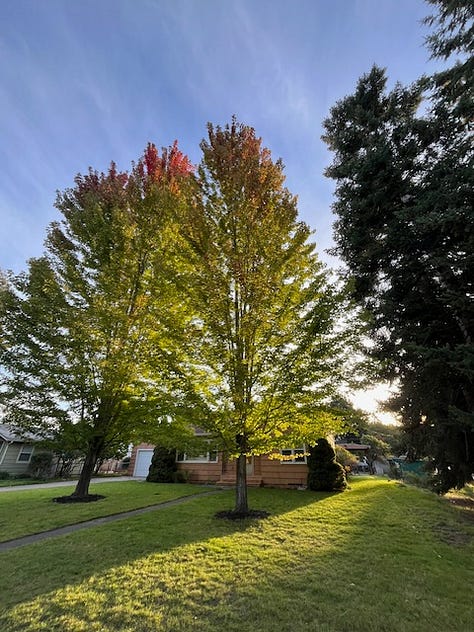
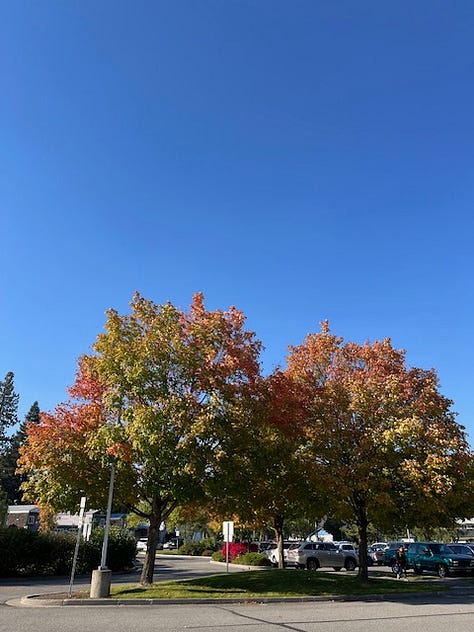
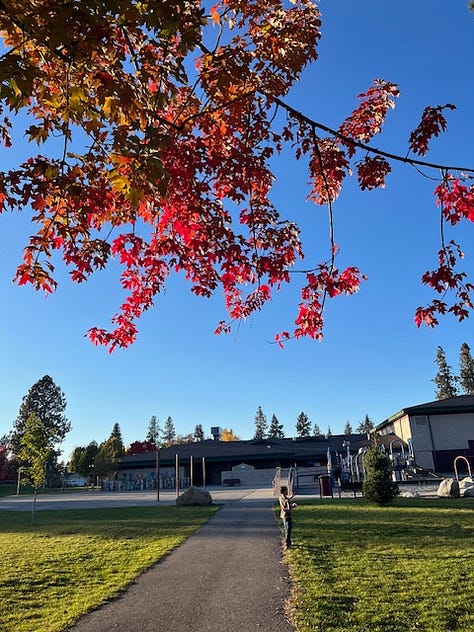
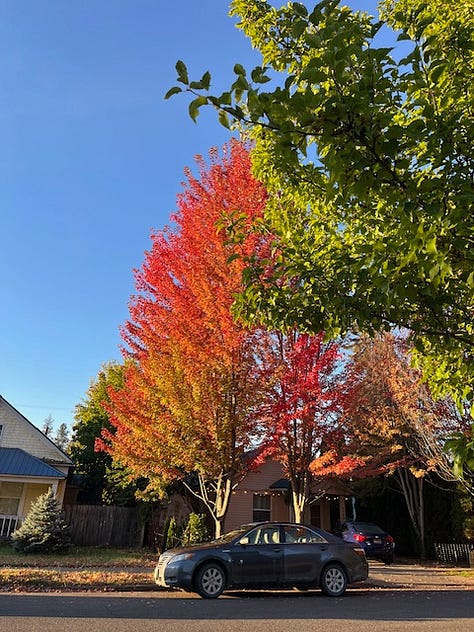
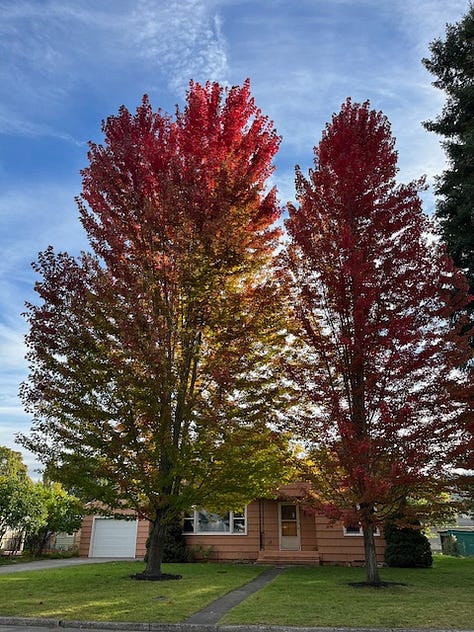
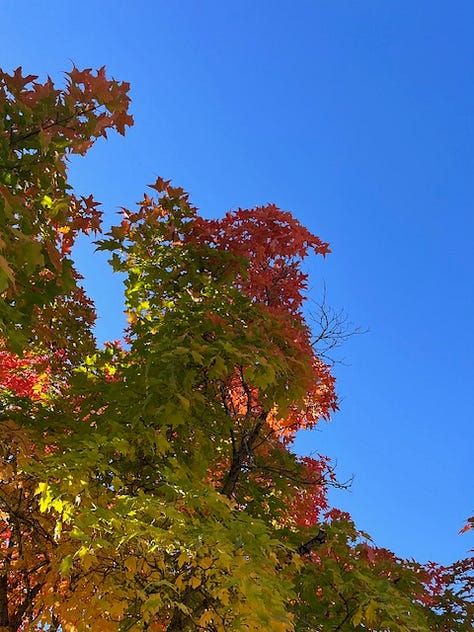
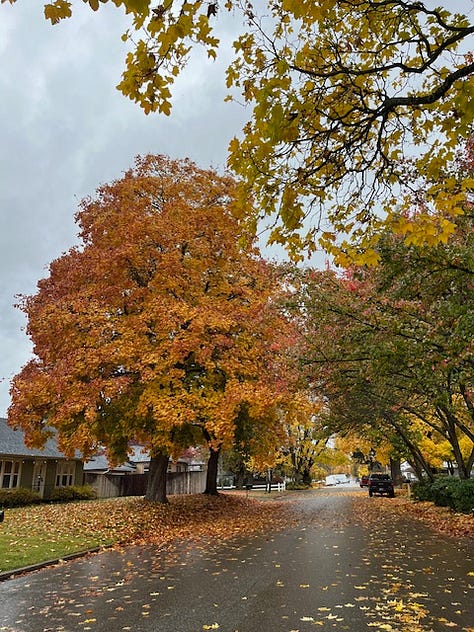
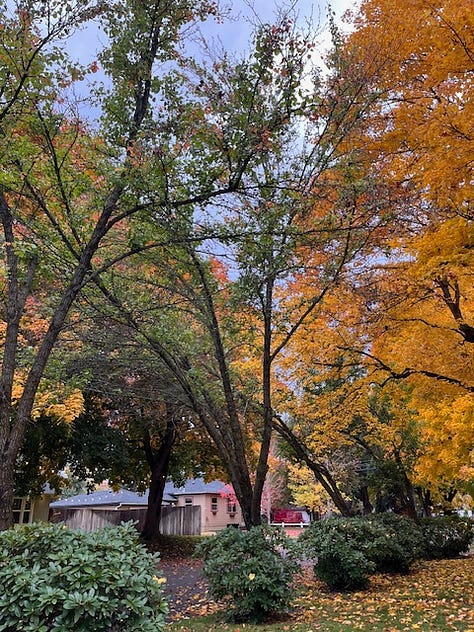
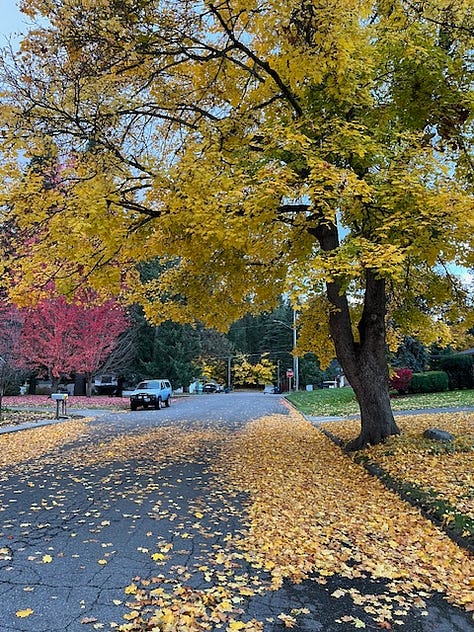
You can read more about my struggle with alcohol in my essay, Dirty Laundry, that appeared on Coffee & Crumbs. To this day, I can’t believe I got sober when I was still in the throes of undiagnosed OCD.


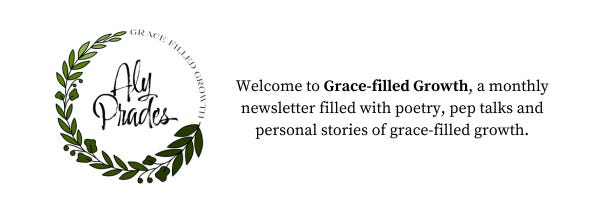
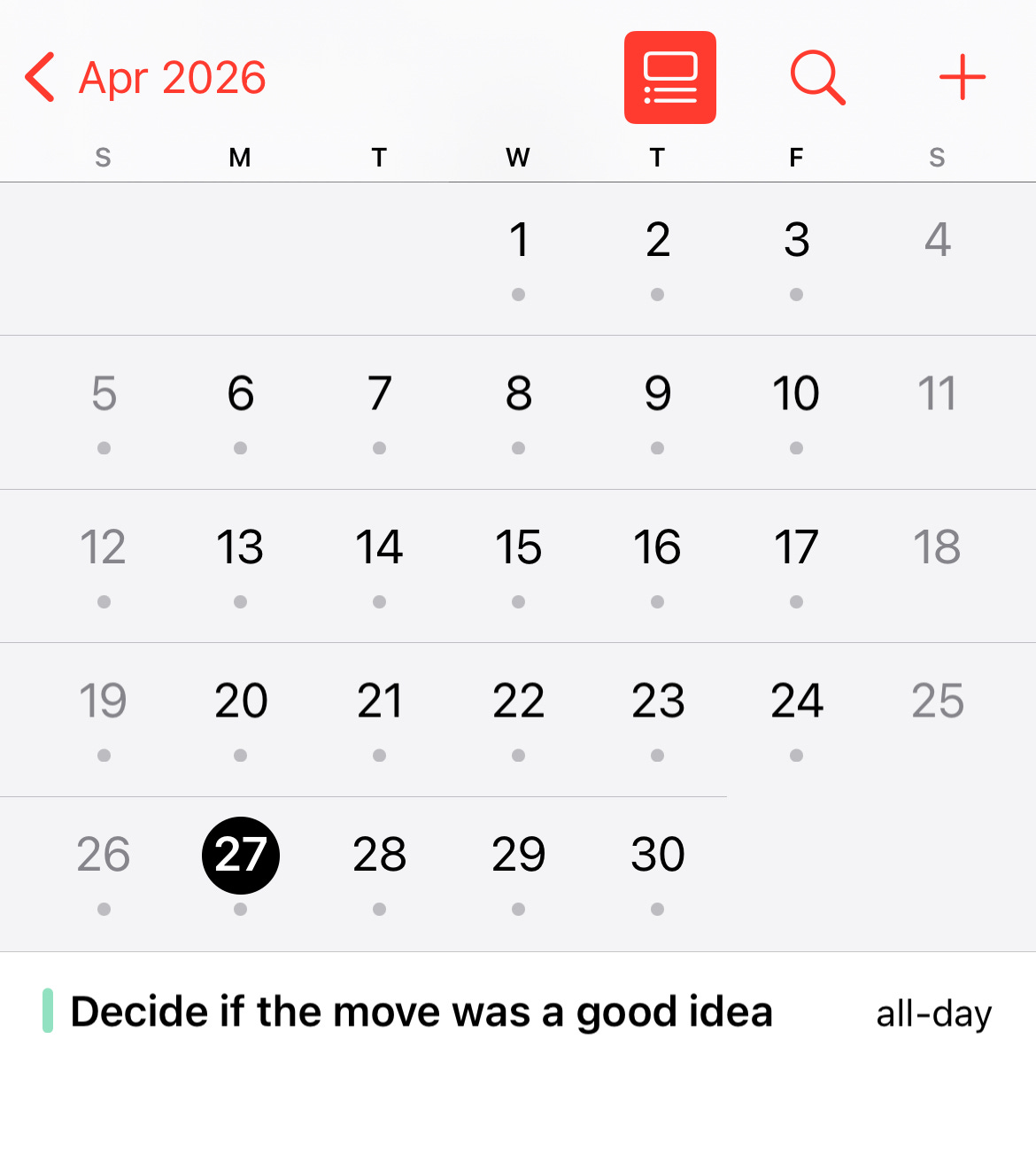


“Releasing this need to solve and measure the merit of the decision in every moment was a life saver for the move. Pressing snooze on solving is a life-amplifier now.
When I’m not solving, I can be living.
I can just be.”
What do I want more of? All of it, Aly!” This is SO good! A relatable story and peek into your life, leaf collages, your humor, your learnings and sharing of tools- it’s all exactly what I needed today 💛
Man, so much goodness here! Some of the mindsets and tools you shared about sitting in tension are helpful for me where I am right now, so thank you for sharing. This will be something I need to read through more than once.